With so much conflicting advice about nutrition and exercise, it’s easy to feel frustrated about knowing what’s best to eat and how much activity is healthy. Nutritionist, Matt O’Neill shares the facts and individual advice about your food and fitness.
Everyone eats, so you could say that everyone is an expert on food. Food affects people in different ways too. Some people love bread and can eat as much as they like. Others feel bloated and irritable after just one slice. So, food choices need to be individualised.
Similarly, exercise gets faster results for some people whilst others have to work harder to see a result. The challenge is tailoring your diet and fitness routine, at the same time ensuring you don’t end up compromising your health by taking on bad advice.
Let’s see how the advice below matches your needs.
You need to cut out carbs
Carbohydrates include the commonly listed options like bread, pasta and rice. Milk also contains carbohydrate as lactose and fruit has fructose. There is carbohydrate in the form of sucrose in many foods, sweets, soft drinks and lollies.
Our modern sedentary lifestyle mean that almost everyone needs to limit carbohydrate to some degree. Avoiding lollies keeps calories down and helps ensure you eat more nutritious foods for energy. But how low do you need to go in terms of carbohydrate to lose weight?
The average person consumes around 300 grams of carbohydrate a day from all sources. A target between 100 – 200 grams is more appropriate for most people’s energy needs. This is what you’ll find in a diet containing; two serves of fruit, two dairy and three wholegrain carbohydrates (starches). One slice of bread equals one wholegrain carbohydrate.
Dropping carbohydrate level below 100 grams a day risk short changing your brain’s glucose needs, sending your body into a state called ketosis. During ketosis, your body is forced to rapidly burn body fat for energy to produce ketones as a back-up fuel for your brain.
You may like the fat burning part of ketosis, but not the muscle wasting. Loss of lean muscle tissue is the consequence of cutting out too many carbs. Your personal carbohydrate needs will be largely influenced by your size and activity level.
You may also choose to adjust your carbohydrate intake based on how carbohydrates make you feel. If you feel bloated, lethargic or uncomfortable eating bread, pasta or rice then you may choose to eat less of these for your carbohydrate energy. Dairy and fruit may be your preferred carbohydrate fuel.
But keep the three wholegrain carbohydrate serves as a minimum threshold for a healthy carbohydrate intake.
Fibre is bad for you
Whether fibre is bad for you or not depends on how much you eat. The average Australian consumes around 20 grams of fibre a day, which places them at risk of constipation now and bowel cancer in the future.
Doubling your fibre intake to 40 grams is the general recommendation to keep your bowel regular and in top condition. A fibre-rich diet with vegetables, fruits, wholegrain cereals and legumes will also help keep calories down and nourish your body with antioxidants.
Double this figure again to 80 grams of fibre a day, especially by loading up on unprocessed bran and you’re likely to cause problems. The high fibre content blocks the absorption of minerals, including iron and calcium, potentially causing deficiencies.
Fruit makes you fat
The minimum recommended target for fruit is two serves a day. Fruit provides fibre, vitamins C and other antioxidants, plus fructose (fruit sugar) for energy.
Once again, it’s the ‘dose’ of fruit that matters. Each 150 gram serve of fruit contains around 300kJ / 70Cal. Eating two serves can easily fit into a healthy diet without adding up too many calories.
However, if you eat seven pieces of fruit a day, that gives you 2100 kJ / 500 Cal, which is the same amount of energy in a Big Mac hamburger. So, there is some truth to the statement “fruit makes you fat” if you overeat fruit when you need to lose weight and are not eating any junk food. This applies even more for fruit juice that concentrates fructose without the bulk of whole food to fill you up.
If your body needs the additional energy that generous quantities of fruit provide, then fruit is a great energy booster. However, you still need to check that your large fruit intake is not unbalancing your diet.
Exercise doesn’t work
The physical response to exercise is highly individual. Some people can simply step onto a treadmill and body fat drops off. Others can pound away for miles for less return on effort.
When a healthy amount of exercise doesn’t work – say 3-5 sessions a week – adding more activity or upping the intensity is not always a good idea due to two potential negative consequences.
Exercise can trigger an appetite response resulting in cravings to replace the calories you have just burnt. The typical scenario is grabbing a 500 Cal muffin on the way home from a 350 Cal workout. The net result is you get fatter rather than leaner.
Overtraining, especially combined with a low-calorie intake can elevate levels of the hormone cortisol. This is the stress hormone that can cause your body to hang onto body fat. You are flogging yourself in a circuit class to burn extra fat, but cortisol is preventing you from losing that fat.
You are certainly not wasting your time exercising as its still building your metabolic fitness, muscle mass and endurance. But for fat loss, easing back down from a heavy workout schedule in combination with good appetite management and the right calorie intake can achieve breakthrough results.
In summary, don’t get mythed off by confusing nutrition information. Get the facts; make them flexible, but make sure the science still works for you. Ask a PUSH_ Trainer to help devise a fat loss plan that works for you!


